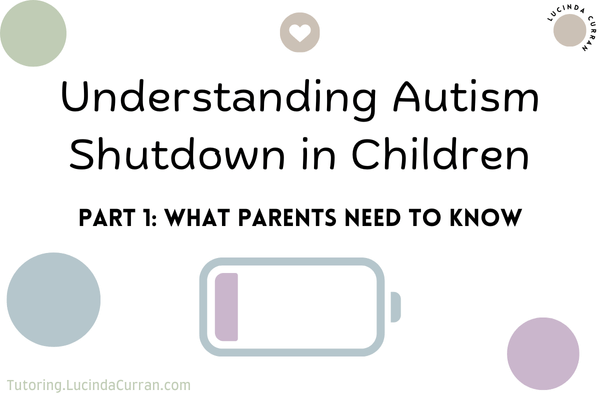Understanding Autism Shutdown in Children: What Parents Need to Know
An autism shutdown in children can be an overwhelming experience for both the child and their family.
These moments can leave parents unsure of how to help their child through what can appear to be an emotional withdrawal.
Understanding the signs, triggers, and how to support your child can significantly ease these experiences.
In this first part of our series, we’ll explore what an autism shutdown is, how to recognise it, and how it differs from a tantrum or meltdown.
What is an Autism Shutdown in Children?
An autism shutdown in children occurs when a child experiences emotional or sensory overload.
Unlike a meltdown, which often involves intense outward reactions such as crying, screaming, or aggression, a shutdown may look like withdrawal, silence, or even a “blank” expression.
The child may seem to retreat inwardly, becoming unresponsive to their environment and the people around them.
This reaction can be a response to overwhelming stimuli—whether sensory (loud noises, bright lights) or emotional (anxiety, frustration).
During an autism shutdown, a child may not be able to communicate their feelings or ask for help, making it harder for parents to know how to support them.
This can be distressing, especially if it’s a new experience for you or your child.
Autism Shutdown vs. Temper Tantrums and Meltdowns
It’s important for parents to understand the difference between an autism shutdown, a temper tantrum, and a meltdown, as these responses are often confused.
Here’s a breakdown:
- Temper Tantrum: A temper tantrum is typically a display of frustration or anger, often because a child wants something they can’t have or is not getting their way. Tantrums are usually brief and end when the child’s desires are either met or they learn the behaviour doesn’t work. Children may regain control of their emotions once they realise the situation is not going their way.
- Meltdown: An autism meltdown is an extreme reaction to overwhelm, often resulting in uncontrollable behaviours such as crying, shouting, or physical aggression. It can happen when a child’s emotions or sensory inputs are too much to handle. While a meltdown can be a result of a child’s frustration or anxiety, they still maintain some level of awareness of their surroundings during a meltdown, unlike during a shutdown.
- Autism Shutdown: An autism shutdown is characterised by the child’s complete withdrawal and loss of responsiveness. It’s a way the brain protects itself from overwhelming stimuli or emotions. The child may appear ‘distant’ or ‘zoned out,’ and they may not react to external attempts to engage them. Unlike a tantrum or meltdown, a shutdown is more passive and involves the child retreating into themselves rather than acting outwardly.
Recognising these differences is crucial in knowing how to support your child during these moments.






